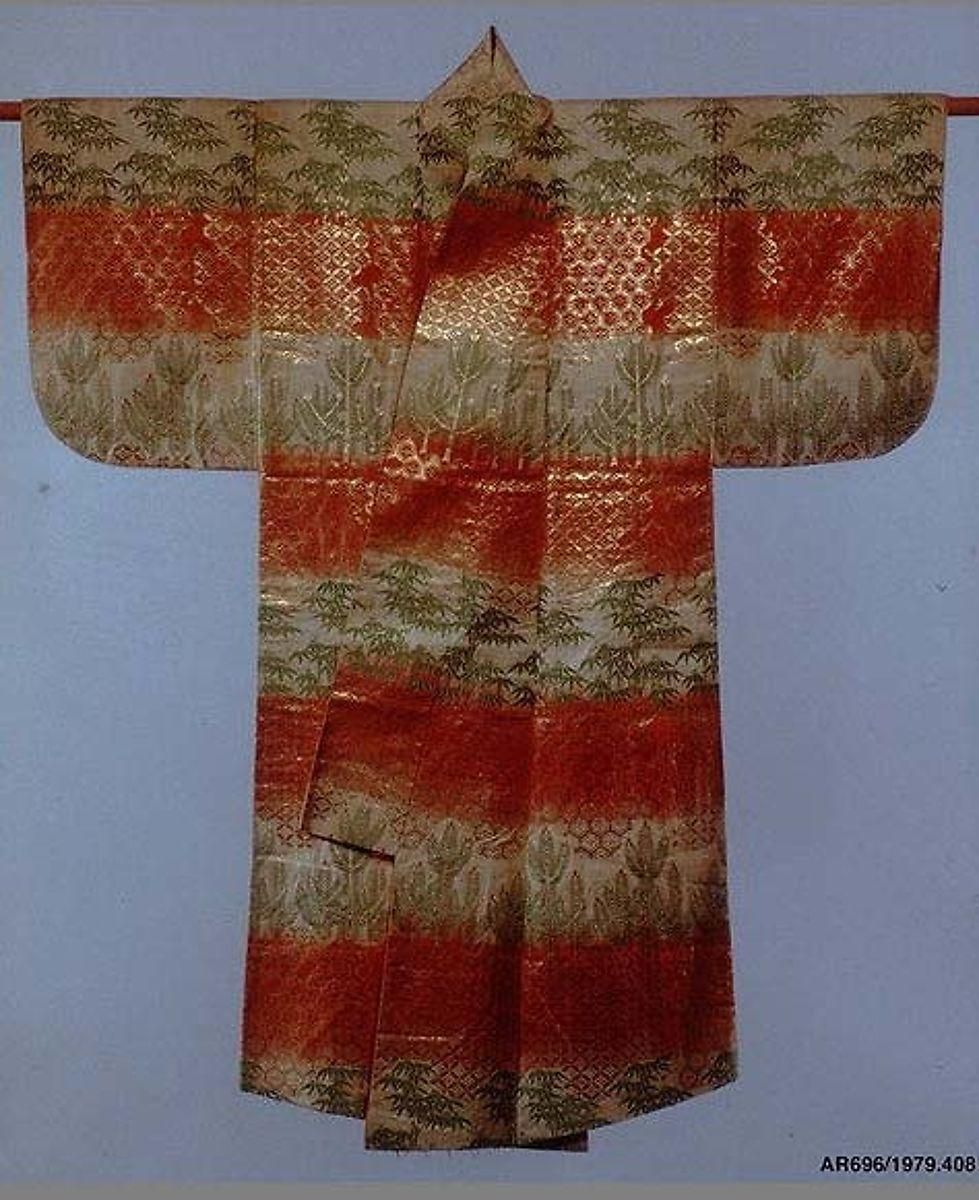
紅白段竹若松模様唐織
Unknown Artist
This resplendent Noh costume presents a wealth of auspicious symbolism on a background of horizontal bands. Green and gold pine and bamboo flourish on the wintry white bands, and continuous golden patterns of hexagons and interlocking circles grace the red. Pine and bamboo, also seen on the smaller robe shown in this case, traditionally represent winter and a joyous new year. The hexagonal pattern is associated with longevity because of its similarity to a turtle's shell, and the design of interlocking circles, termed shippō (literally, "seven treasures"), lends an aura of prosperity. The resist-dyeing of the warps, reserved in white and dyed in red, imparts a pleasing softness to the boundaries between the bands.
Credit: Purchase, Gift of Mrs. Russell Sage, by exchange, 1979
19th century
Silk twill weave with resist-dyed warps and supplementary weft patterning (karaori)
165.7 x 137.2 cm
1979.408
Image and text © Metropolitan Museum of Art, 2019
Where you'll find this

The Metropolitan Museum of Art
Permanent collection
